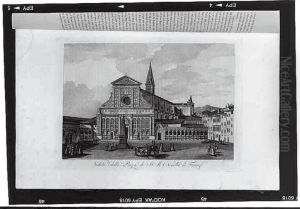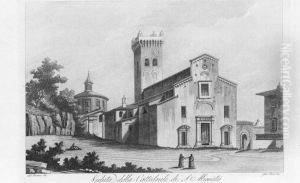Francesco Fontana Paintings
Francesco Fontana was an Italian lawyer, astronomer, and engraver who lived in the late Renaissance and early Baroque periods. Born in Naples in 1580, Fontana is most notably remembered for his work in astronomy, particularly his contributions to telescopic observations of celestial bodies. Although not as famous as his contemporaries Galileo Galilei or Johannes Kepler, Fontana made significant strides in the field with his observations and recordings.
Fontana developed an interest in astronomy at a young age and was greatly influenced by the groundbreaking work of Galileo. He built his own telescopes, improving upon the designs that were available at the time, and began observing the night sky extensively. His observations led to the publication of his book 'Novae Coelestium Terrestriumque Rerum Observationes' (New Observations of Celestial and Terrestrial Things) in 1646, which included some of the earliest known drawings of the moon and planets as seen through a telescope.
In his book, Fontana claimed to have observed spots on Mars and a ring around Saturn before the telescope improvements of Christiaan Huygens, who is generally credited with these discoveries. Fontana's assertions were controversial and not widely accepted at the time. He also claimed to have observed a satellite orbiting Venus, which later observations proved to be incorrect. Despite these controversies, Fontana's work contributed to the cataloging of lunar features and the study of planetary surfaces.
Fontana's engravings of his telescopic observations are significant as they represent an early attempt to systematically document and share astronomical discoveries with the scientific community and the public. These visual records were an important step towards the modern scientific practice of sharing observational data for verification and study.
He continued to observe and record his findings throughout his life, contributing to the scientific revolution that was transforming the understanding of astronomy. Francesco Fontana died in 1656, leaving behind a legacy as one of the early pioneers in telescopic astronomy.

